Bon Odori or Bon Dancing is a summer tradition held all over Japan. It’s a chance for families to get together and have an enjoyable time dancing to the rhythmical music. Seeing as how the Obon season is also when ancestors visit from beyond the grave, they, too, can take part in the festivities if they wish.
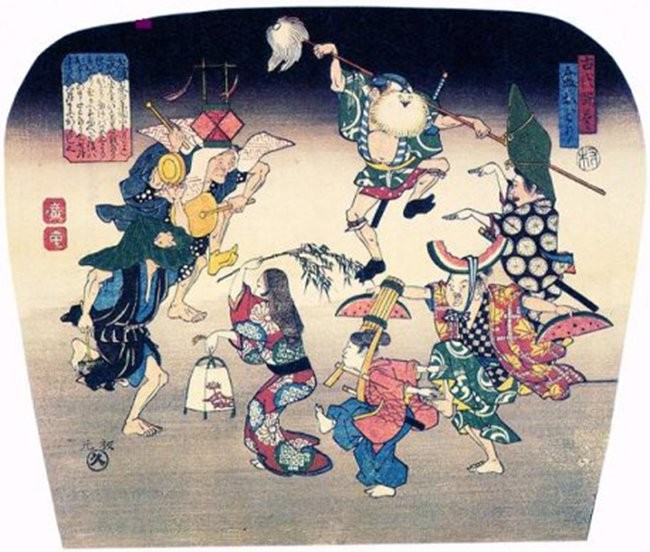
Going Back in Time
Gatherings of people being what they are these days, let’s all go back in time and get together there. How about 200 years ago. Edo Era, Japan. It’s summer, of course, Obon actually. You’ll notice we’re in a modest-sized village. Dusty streets, houses of wood, with thick washi-paper windows, and ceramic-tiled roofs. There is a line of paper oil lanterns winding through the road and if we follow it, it will take us to the cemetery.
Two days ago, you weren’t here but, it was the first day of Obon and everyone practiced mukaebi. That is they waited until dusk, when the sky turns a soft blue, the cicada quiet, and the heat lets up just a little, and one by one the families gathered at their front gates or doors, where they kneeled around a single unglazed plate. In the plate they piled a bunch of peeled hemp stems called ogara. They then lit them on fire and pressed their hands together in prayer. “Kono hi wo mejirushi ni, ie ni kaete kudasai.” “Please use this fire to find your way home.”
They were speaking to their ancestors, spirits that have just been released from the world of the dead and are flying or crawling, or riding those quick cucumber horses so they can rejoin our world for a few days. You see, in the past, there have been mistakes, confusion, and sometimes a soul ends up lost or in the wrong home. This practice of mukaebi insures this doesn’t happen. Each spirit follows the light and smoke of their family’s fire.
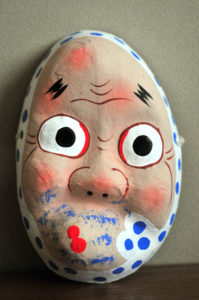 But that was two days ago. Today, again the sun is starting to set, the heat slightly dissipating. Look around. We’re all dressed in colorful yukata or jinbei, wearing straw or wooden shoes. We’ve got paper fans. Oh, some of us, I see, are wearing masks. There’s a few kitsune/fox masks and there’s a hyottoko. You know the goofy mask of the man with the white face and red cheeks, a tenugui-bandana tied around his head, and his mouth pursed and kind of skewed to the side. I wonder who that is? Listen? Do you hear that? It’s time for bon odori. The entire village will be there.
But that was two days ago. Today, again the sun is starting to set, the heat slightly dissipating. Look around. We’re all dressed in colorful yukata or jinbei, wearing straw or wooden shoes. We’ve got paper fans. Oh, some of us, I see, are wearing masks. There’s a few kitsune/fox masks and there’s a hyottoko. You know the goofy mask of the man with the white face and red cheeks, a tenugui-bandana tied around his head, and his mouth pursed and kind of skewed to the side. I wonder who that is? Listen? Do you hear that? It’s time for bon odori. The entire village will be there.
Hey hey, Uncanny Japaners, Uncanny Japanites, Uncanny Japanabes. Okay. I’ll stop. Tweet to me if you know what super cool podcaster I was channeling just now. I think the heat might be getting to me. Today’s high is 37 degrees, that’s 98 to my fellow Americans and I can’t record with the air conditioner on, so it’s a little warm. Anyway, I hope you are all well and not too hot or cold depending on where you are in the world.
I have a little news. I was in The Japan Times twice in the past two weeks. Once with a piece called “Top Podcasts about the Land of the Rising Sun”, written by Claire Williamson. That was a very pleasant surprise. I didn’t even know that was coming out. Thank you Google Alerts for letting me know, and Claire for including us on that very lovely list. The second article wasn’t about the podcast per se but about my writing and books. The title was “Chilling Japanese Ghost Tales with Contemporary Twists to Help you Beat the Summer Heat”, and was written by Kris Kosaka. She also talks about Aoko Matsuda’s book “Where the Wild Ladies Are” and Barry Yourgrau and his “Tokyo Ghost Gaga”. I hope I didn’t butcher his name too badly.
Okay, onto today’s topic. I talked about obon way back in episode 8 and 9. There I mentioned the ancestral ghosties riding cucumbers and eggplants, in case you wondering what that was about. So I won’t go into any more details about that. Those are there if you’d like to listen to them.
But there is one thing I didn’t cover in those two episodes, and that was bon odori, or bon dancing. When I think of summer in Japan, I think of stag beetles, cold noodles, finely shaved strawberry ice with condensed milk drizzled on top, the most gorgeous and colorful fireworks displays you’ve ever seen in your life, and the summer festivals everywhere that culminate around bon odori.
Two Types of Bon Odori
One theory as to the origins of the bon dance is that the monk, Kuya Shonin (born in 903) came up with a practice called nenbutsu odori (念仏踊り). While traveling around Japan he was shocked that people didn’t really know that much about the Buddha and his teachings. After some thought, he got an idea. He traveled again, but this time he went around beating on a small drum, dancing a funky little dance and chanting the sutras. Rightly so, this got people’s attention, especially children who copied him. The monk Kuya then continued traveling, dancing, and singing with the belief he was educating these lay folk about Buddhism. This continued after his death and it was called nenbutsu odori.
There was another practice where during obon monks would go around and dance in a circle outside a person’s home while reciting prayers to their deceased relatives. So throughout the years these two practices mixed with local traditions and dances to become what we know today as bon odori.
It’s said there are two types of bon dance, dento (伝統) or traditional dancing, which is the older version that I just mentioned and minyo (民謡) which uses folksongs and was developed after WWII.
But the truth is my whole purpose of today’s show is to admit that I was never really enthralled with bon odori until one day, I was talking to a friend who said the entire reason for it, and why you see some people wearing masks, is so that the ancestors – who you’ll remember have left the world of the dead and are in town for a few days – can also participate in the fun. That gives a whole new slant on this nighttime gathering; the only light being drooping strings of paper lanterns; the jangling, rhythmical to the point of being hypnotic music; the masks.
The Three Big Bon Odori in Japan
Throughout Japan, there are so many different kinds of dances and music and ways of celebrating. But let me introduce you very briefly to the San Dai Bon Odori (三代盆踊り), or top three obon dances and touch on a tiny bit of what makes them interesting.
Let’s start up north with one I just learned about, but is actually the one that convinced me to do today’s show.
Nishimonnai Bon Odori (Akita Prefecture)
It’s performed in Akita Prefecture during obon, of course, and is called Nishimonnai. It’s been around for at least 700 hundred years and has been designated a national intangible folk culture property.
There are two different styles of dress the dancers wear. One is the pretty yukata summer dress (indigo, white, yellow, red) tied with a thin obi around the waist, nothing out of the ordinary there. But these dancers all wear these woven, half moon-shaped hats that are pulled down low so you can’t see their faces at all. Beautifully spooky.
The second style is again yukata, but instead of the hat the dancer is wearing a dark cloth completely covering their face. There are some eyeholes, but unless you look hard you can’t see them. The music, dance, lyrics and kakegoe (掛け声) (men, calling out to the music) is quite mesmerizing. You can imagine as the night wears on, everyone becoming a little dizzy and drunk on the atmosphere. How easily it would be for a an ancestor or two to slip into the line up and dance alongside everyone else. Especially with all those hidden faces. That’s called Nishimonnai.
Gujo Odori (Gifu Prefecture)
Number two is Guujou odori (郡上おどり). Gujo odori takes place every summer in Gifu, in the small city of Gujo. It started about 400 years ago in the Tokugawa Era as a way to get the entire town to come together and celebrate no matter what a person’s societal level or position. So what’s special about Gujo odori? Well, first there is a series of ten songs that are played over and over again. Not just one or two.
Second, if you have particularly good dancing technique, you very well could be chosen to receive a certificate. But the word certificate doesn’t do this cool framable paper justice. It’s brush inked, with vermillion stamps, and it sounds like it’s a big deal to get one.
And lastly, is that the festival starts in the middle of July and is danced nightly for an entire month, ending with the four days of obon, when the upwards of 250,000 people who have come from all over, start dancing at sunset and keep going all night long until the sunrises again. Which I would guess would make the chances of bumping into great grandma or great grandpa a little higher. Don’t you think?
Awa Odori (Shikoku Prefecture)
Okay, the third dance of the big three is Awa odori (阿波踊り).
I think it’s my favorite, too. I literally get goosebumps when I hear the music and watch the dancing. I’ve never even seen it in real life, but as soon as the world gets back to normal, you can bet I’m going to be making the trip down to Tokushima, Shikoku along with 1.3 million other tourists. Seriously. In normal times, that is how many people attend the four-day long festival.
The funny thing is, I discovered Awa Odori, from a Japanese music video. The band is called Yura Yura Teikoku, and the song is “Yakosei No Ikimono 3-Biki” and the entire video is three men dressed in yukata, wearing the hyottoko mask (which I described in the intro, mouths pursed, tenugui wrapped around their heads). The men are holding fans and for the entire almost four minutes, they are dancing awa odori. I can’t describe exactly. The hand movements, the thing they do with their feet, the energy. It still blows my mind. That’s Yura Yura Teikoku, and the song is Yakosei No Ikimono 3-Biki.
So what makes awa odori special? First, it is the most attended with, like I mentioned above, 1.3 million people swooping in from all over Japan. The celebrations literally take place all over the city. As for origins, it seems a certain Daimyo, Hachikusa Iemasa, hosted a drunken celebration on the opening of the Tokushima castle and it kind of took hold.
If you’ve never watched Awa odori before, I really encourage you to spend an entire night watching Youtube videos. But for now let me entice you with a description that cannot do the dance justice and is really oversimplifying it, but…
There are very broadly two types of dances. I’m not going to say one is performed by all women and the other by men. Because that’s not the case. But the first dance I’ll describe is a more feminine with brightly colored or pastel yukata and dainty, more controlled movements; while the second one is much more, I don’t know, wild? rougher?
Okay, in the first one everyone is wearing gorgeous long yukata, and those half moon-shaped, woven hats called amigasa (アミガサ). But these, unlike the nishimonnai dance in Akita, are tied just over their chins and aren’t pulled down so far, so you can see the dancers’ faces. These dancers also wear white tabi socks and geta shoes and the dance seems to be done mostly tilted forward on the shoes and kind of tapping as they dance. Hands raised high overhead. It’s all very eloquent.
Now as beautiful as that is, in the second dance, the more wild one, everyone is wearing either men’s yukata or the shorter jinbei dress, and white tabi socks, not shoes. They can be carrying a fan, or lantern, or nothing at all. What’s fun about them is for headwear, they have a cloth tenugui over their head, with the sides twisted and tied under their noses. And the dance is also very low to the ground, which is pretty impressive.
There is also a funny chant you will hear throughout the event if you go. It goes like this:
Odoru aho ni / miru aho / onaji aho nara / odorana son, son. The dancers are fools, the watchers are fools, both are fools so why not dance? So Awa odori is just so much fun and I imagine that’s why it’s the biggest of the three. The Nishimonnai in Akita, the Gujo Odori in Gifu, and the Awa Odori in Shikoku.
Some Modern Takes on Bon Odori
Now a final, absolutely adorable thing I stumbled across while reading about bon odori. I’m not sure how it happened, but some places actually dance to Bon Jovi for one of the songs. Bon odori. Bon Jovi. Also, I watched some of them on Youtube and Living on a Prayer actually syncs very nicely to the dance. I guess it’s a thing. As well as dancing to Dancing Queen (by ABBA), Staying Alive (Bee Gees), September (Earth, Wind and Fire), and Celebration (Kool and the Gang) to name a few. I’m not sure. But I hope the Buddha wouldn’t mind.
Okay, it’s getting late. Look at all these people. Doesn’t it feel like there are more here now than when we started. Hey, is that great, great, great grandma Tora? Doesn’t she look happy.
You know, gatherings being what they are these days, all of us meeting up in the Edo Era might sound romantic and everything, but do be careful. Don’t wander off. Because look over there. See that filthy man, skeletal, his dancing somewhat deranged? See the way he stares, eyes too sharp and unblinking, he doesn’t take them off us for a minute, does he? Notice his ratty hair, the pustules all over his skin, and bright red mouth. If you look closely you can see a fine black fog or mist swirling about him. Don’t let it touch you. Don’t get too close.
I don’t know this time very well, but it is whispered that he is the God of Pox, but there are other monsters out there, too, not just smallpox hiding behind masks or friendly faces. There’s diphtheria, measles, cholera, dysentery…you get the picture. Please be careful!
That’s it for today. Please consider supporting the show on Patreon. Supporters who pledge in euros, pounds, or dollars can choose their local currency now so you don’t have to worry about fluctuating exchange rates and extra feeds. Take care and stay safe and thank you all for listening, I’ll talk to you again real soon. Bye bye!
Credits
Intro and outro music by Julyan Ray Matsuura
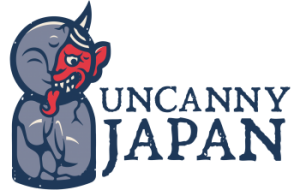
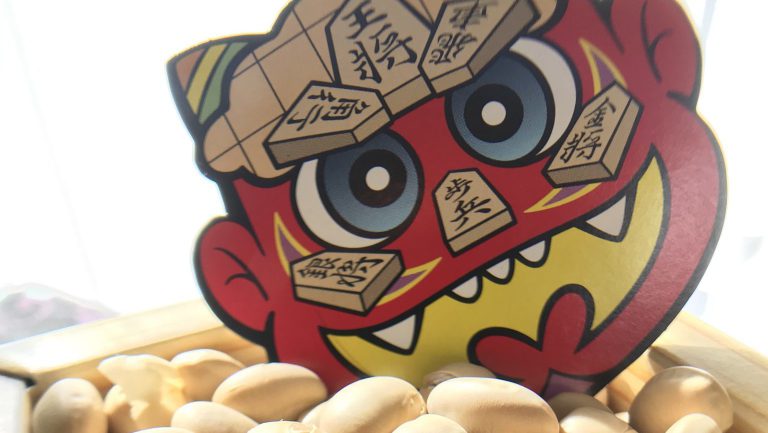
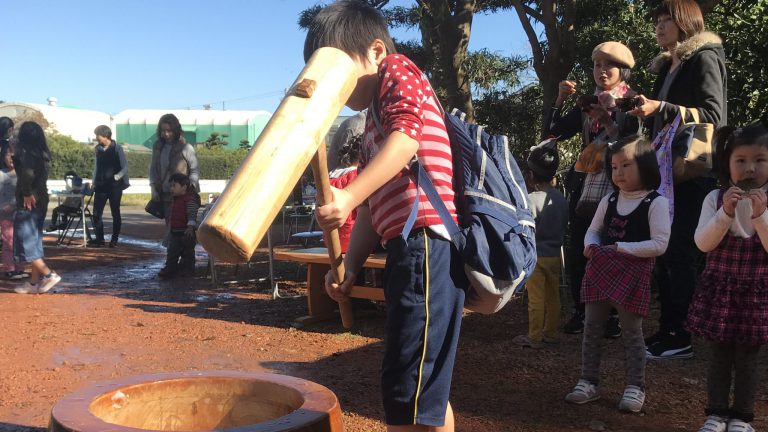
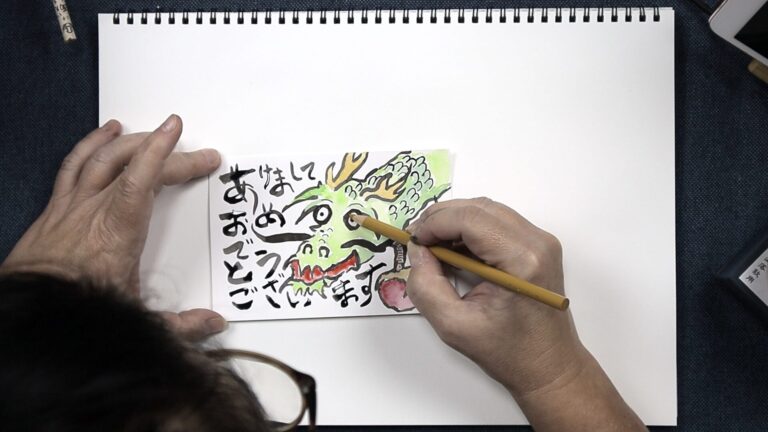
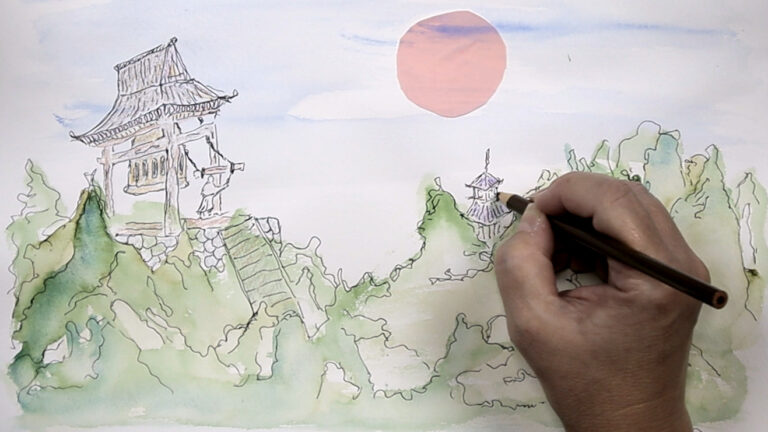


Really enjoyed the atmosphere of this episode! Not sure if I missed it, but what is the song/audio playing in the background throughout? It’s wonderfully hypnotic!
Nicole, thank you for commenting and your kind words. I used four different types of bon dance music for this episode. The beginning and end were more old timey, while the middle three were the ones I was talking about at the time. For example, when talking about Awa Odori, I used the Awa Odori music. If you scroll through the transcripts, there should be links to the ones I used. They’re longer versions and have the video as well, so very interesting, I think.
That is the most number of shamisen in one place I have ever seen!
Loved this episode because it just sets the mood, talking about Obon and mukaebi. Seasonally, it just seems like things coalesce into festivals like this no matter the hemisphere.
I also really liked the segue at the end about mortality and the times in which we are living as it related to the bon dance festival. “Be careful lest you attend the next dance as a spirit!” This episode was all relevant and in a myriad of ways!
William, thank you so much for your comment. Yes, I thought so, too! I was really happy with all the threads that came together in this episode. A lot wasn’t said out loud, but I liked the way the past and present; life and death; letting loose, being wild and free, & being careful, all juxtaposed so nicely. I was hoping listeners would catch this as well. I’m so happy you did!